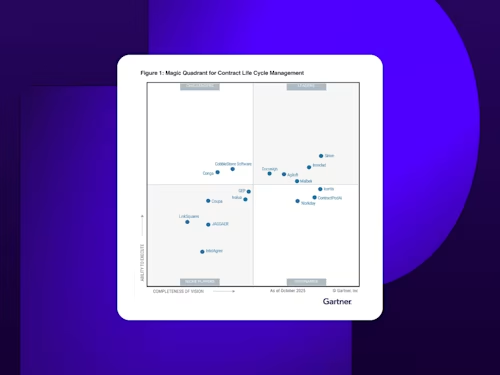
6 Banking and Lending Trends to Watch in 2024
Banks must focus on future-proofing by investing in growth while maintaining flexibility and adaptability in an ever-changing financial services landscape.

High inflation, high interest rates and the collapse of three major regional banks toward the start of the year made 2023 challenging for banks and lenders.
The collapse of three regional banks sent shockwaves through the industry, resulting in outflows of consumer deposits from regional banks to larger banks deemed “too big to fail.” In 2024, deposit growth remains a challenge, as higher interest rates have led consumers to move their funds from standard deposit accounts to higher-yielding CDs or money market accounts. Moreover, middle-class consumers are struggling to make ends meet amid the inflationary pressures of the past two years, having depleted much of their savings accumulated during the early years of the pandemic.
On the asset side of the balance sheet, lenders are coping with higher costs of funds and dampened borrower demand. Concerns are also growing around the state of the commercial real estate (CRE) market—tighter credit conditions coupled with lower occupancy rates have fostered higher delinquency and default rates, placing $64 billion in troubled assets at risk.
Beyond CRE, lenders are also dealing with rising delinquencies in their consumer portfolios, driven in part by the resumption of student loan payments, and credit card debt reaching an all-time high of $1.13 trillion.
In this environment, banks (especially regional institutions) can anticipate heightened scrutiny and pressure from regulators looking to avoid further instability in 2024.
Strategic technology investments will help banks accelerate customer acquisition and time to revenue, minimize inefficiencies and costs, and adapt to an evolving security and regulatory landscape.
1. Better experiences are essential to deposit growth and customer loyalty
The combination of rising inflation eating into middle-class consumers’ savings and the collapse of several large regional banks in early 2023 have put increased pressure on banks to raise deposits. According to BAI, deposit growth is the top priority this year for banks.
The competition for winning, retaining and growing deposits has never been higher, as digital upstarts offer more favorable savings rates coupled with ultra-convenient digital experiences designed to make setting up new accounts and transferring funds easier.
This is particularly true for younger generations, as 61% of Gen Z and 54% of millennial consumers surveyed say they would switch providers for better mobile app and digital capabilities.
To successfully grow deposits and win new customers, banking institutions must prioritize offering experiences that are seamless, convenient, personalized and consistent across all channels.
And the bar for great experiences keeps rising. In fact, only 11% of banks believe they provide excellent customer service online.
It’s no surprise then that digital customer experience is the third highest investment priority for banks in 2024, behind only deposit growth and new customer acquisition. And it’s a critical component to achieving the first two priorities.
As they consider where to invest their technology budgets, banks should ensure all customer touchpoints—including those involving forms and agreements—are frictionless and optimized across all channels, including mobile, web self-service, the contact center and in the branch.
Taking foundational steps like collecting information via intuitive, self-service forms, embedding personalized applications with dynamic content into web or mobile experiences and exchanging important information and documents via text can significantly improve the customer experience and reduce abandonment rates.
2. The distribution landscape continues to shift
Financial consumers have more options today for accessing banking services, and traditional banking institutions now confront competition from all sides.
The trend began with the emergence of neo- and challenger banks like Chime, which offer digital-first services. Since then, Big Tech firms such as Amazon and Meta and big-box retailers like Walmart have made forays into financial services via strategic fintech partnerships. Embedded finance—a broad term to describe banking services integrated into the point of sale of nonfinancial businesses—emerged during the pandemic and is now well-positioned to explode over the next few years. Deloitte predicts a tenfold increase in the segment by 2025.
While this trend toward digital banking has remained consistent over the past few years, 2023 saw the tide of branch closures begin to wane. According to research from Arizent, 59% of community banks believe their branch network will remain stable over the next year. In fact, many banks and credit unions have plans to strategically expand their network in 2024, with 35% of respondents saying they intend to open additional branches this year, compared to just 28% in 2023.
While younger consumers may visit the branch less often for routine or simple transactions, the branch experience remains highly valued across generations for more critical and complex interactions, such as retirement planning and lending, where face-to-face advice is coveted.
That said, there’s ample room to modernize the branch experience to meet the needs of today’s financial consumers. First, banking institutions must avoid pitting the branch against the digital experience, or in-person versus remote. Both are critical and ideally support a cohesive, consistent experience.
Second, organizations need to evolve their branch layouts from the sterile, transactional offices of the past to more welcoming and engaging spaces. This includes offering self-service options for simple, routine transactions, allowing bankers to focus more on providing expert advice and building relationships.
Lastly, it’s important to remember the branch’s key role in supporting and reinforcing brand identity. That’s why it’s critical to ensure that customers enjoy an outstanding and convenient experience anytime they walk into a branch without the hassle of long teller lines and inefficient processes.
The branch remains an important distribution channel for Incumbent institutions. The ability to innovate and respond to changing preferences is key to staying competitive in an evolving, disruptive marketplace.
3. Security and fraud mitigation stay top of mind
Banks are navigating a more complex and costlier cybersecurity landscape than in years past, with the frequency and sophistication of cyber threats on the rise. According to data from IBM, the average cost of a data breach rose to $4.45 million in 2023, 15% higher than in 2020.
Fraud is an especially acute concern for consumers and banks alike, with 42% of banks saying they have experienced both first and third-party fraud equally. New trends like synthetic fraud and “drop-fraud” account incidents, where fraudsters open digital deposit accounts with low balances, then wait a period of time before electronically depositing funds earned through nefarious means, are also on the rise.
These trends are driving deeper conversations around maturing verification and authentication protocols to better address today’s risks, including capitalizing on advances in biometrics and AI-powered analytics.
For example, liveness detection technology enables customers to take a selfie at the time of transaction, which is then matched to the photo on their government-issued identity document. For the bank, this process better enables them to confirm the customer is who they claim to be during a remote transaction.
Banks also need to think more critically about where they embed identification—new account openings alone are not enough, and based on drop-fraud trends, fund transfers should be the next transaction type to target for increased fortification. The best technology will allow institutions to confidently embed identification into their processes without compromising seamless customer experiences.
In reaction to these trends, regulatory bodies like the FFIEC and FTC have revised their guidance to offer more prescriptive language reflecting information security best practices. This includes the increased use of thoughtful access controls, multi-factor authentication and identity verification, and proactive monitoring of threats and suspicious activity. The NYDFS is the latest body to join the club, finalizing updates to their Part 500 requirement in November 2023 to also offer more prescriptive guidance on information security to financial services institutions operating in New York.
4. Investment in regulatory compliance is imperative
Information security is not the only area of increasing regulatory scrutiny.
In June 2023, the Fed, OCC and FDIC issued joint interagency guidance for the first time covering how banks can enhance their third-party risk management processes. To align with this guidance, banks must revisit their existing contracts and processes for third-party vendor onboarding to ensure they’re taking a rigorous approach to defining the terms of their relationship.
The recent downturn in the CRE sector has also led these regulatory agencies, along with the NCUA, to revise their policy statements to directly address how lenders should address borrower needs for short-term loan accommodations and workouts.
The effects of these updated policies and guidance will continue to play out in 2024, and there are additional areas of change coming, including:
The reapplication of key Dodd-Frank provisions and increased scrutiny of regional banks’ resolution planning regimes
The SEC’s upcoming shift to T+1 settlement cycles in May 2024
Increased regulation of banks’ use of AI, including anticipated data privacy mandates
All these regulatory areas have implications for contracts and the definitions of their counterparty’s obligations. To navigate the tenets of these multi-front regulations and demonstrate to regulators they’re taking compliance seriously, banks should invest in technology that scales across use cases and allows them to identify key contract language, understand implications, automate processes and take appropriate next steps.
5. Seamless integration of technology and platforms is a top priority
To delight customers and keep pace with evolving security and compliance requirements, banks must prioritize their transition from complex legacy systems to sophisticated, cloud-based technology platforms.
This is a significant undertaking, and it’s no wonder that banks’ #1 investment priority is technology integration and platforms.
Many banks have already invested considerably in new technology, including transitioning to cloud-based infrastructure for cost-effectiveness, scalability and improved data security. The next step is to optimize these vendor relationships through standardization to best-in-class providers.
To achieve these goals, banking institutions should automate workflows and eliminate manual handoffs among core teams while integrating disparate, siloed software through the strategic use of pre-built integrations or custom APIs. This is especially important as banks seek to maximize efficiencies from their existing vendors and minimize their vendor footprint. While cost constraints will continue to be critical as the industry faces ongoing market challenges, banks must recognize that strategic investments in technology will help reduce operational overhead, enhance staff productivity and help improve margins over time.
6. Advances in AI and data are accelerating transformation possibilities
It’s no surprise that a leading catalyst of today’s tech modernization efforts has been the exponential growth of AI applications, given the explosive entrance of generative AI into the conversation in 2023.
Indeed, nearly two-thirds of banking leaders (up from 46% last year) believe that new technologies like AI, machine learning and blockchain will be among the top areas of focus and spending this year.
The power of AI opens the door to a range of applications that are driving measurable improvements in customer experience, operational efficiency, and security and compliance. They include risk modeling and fraud detection, lending and compliance processes automation, chatbots and virtual assistants, and deep data insights that will enable banks to understand customer behavior and provide more personalized offerings.
Despite these opportunities, only 11% of bank executives surveyed currently use AI for document analysis and data extraction, representing an untapped area of potential opportunity. Banking institutions can apply advanced cognitive technologies within their agreement processes to extract, search and analyze key terms and provisions, and create and co-author new contracts.
But, banks need to prioritize their data management to take full advantage of AI’s potential. By unlocking data across all areas of the enterprise, they’ll allow information to be shared freely across systems, processes and departments, maximizing efficiencies and offering superior customer and employee experiences.
Through the power of integrated solutions, Docusign helps banks and lenders modernize their agreement process to deliver better digital experiences, enhance agility and operational efficiency, and improve security and compliance. To learn how to digitize your new account opening process, download this eBook. And to discover best practices for enhancing your institution’s data security, read our brief on enhancing agreement security.

Manas Baba is a product marketing manager for the financial services industry at Docusign.
Related posts
Docusign IAM is the agreement platform your business needs


